I’ve posted here some of KW Janne’s great pictures from today… with a bit of commentary for you organistas!
First, let’s take another look at some of Sundays’ carried in pipes…
These pipes are about 100 years old… they are slender in scale, which gives them what organ-builders call a more “stringy” sound… More of the higher harmonics are emphasized. This rank of pipes will combine with the 16′ Infrabass, (which is from our previous instrument) to provide a solid under-pinning to our hymns.
In order for the pipes to speak, air (or, wind, as it’s called) will need to get to each one. This is accomplished via the windchests, which are beautifully crafted for our instrument. Here’s how they get over the balcony rail…
…and over the top!
The 16′ Holz Violone will be fed from a small chest that will rest on the balcony floor. Those walls that were created by our General Contractor will now become, literally, a part of the organ, as they will help “propel” the sound out into the sanctuary. Here’s how the pipes filled the chest… brought up one at a time by the organ team.
Each pipe will have it’s tuning slide re-installed by Albert, and carefully placed on the chest.
…and then it joins it’s brothers (sisters), ready to worship!
As the organ space fills up, it will get quite crowded in there…just enough room for maintenance and tuning in the future!
The other windchests were also put into position today. There are two basic types being installed. The “slider” chests use a design that is literally hundreds of years old, where the air is allowed to enter the selected pipe rank by holes in a long piece of wood, called a “slider”… the modern element is that these sliders will be moved by a small electric motor, rather than by a direct mechanical linkage from the organ console. The other type of chest, the “unit” chests, will allow a single rank to be played at different pitches. These chests have a separate valve per note. Here they are, ready to receive their pipes.
You can see the various sizes of holes…You can make out separate “planks” of wood on the top of the chests. Each plank will generally hold one rank of pipes. In our organ, that’s usually 58 pipes, one for each of the notes on an organ keyboard.
Underneath the chests, what is now empty space will soon be filled in by supply windways, and air reservoirs… you can see that the structure is definitely built to last, with a quality that IKEA can only dream of!
The contractor-installed maple flooring will also do it’s part to reflect the sound of the pipes into the nave of the church. Practice up your singing!
For reference, here’s where we started, just two days ago:
…an artist’s canvas, if you will.
Incidentally, many people in the “organ world” are checking in to this installation and organ, and are very excited by what Sebastian is being allowed to do here. We’ve heard from internationally known organists as well as fellow organ builders. It’s often a very supportive group of colleagues.

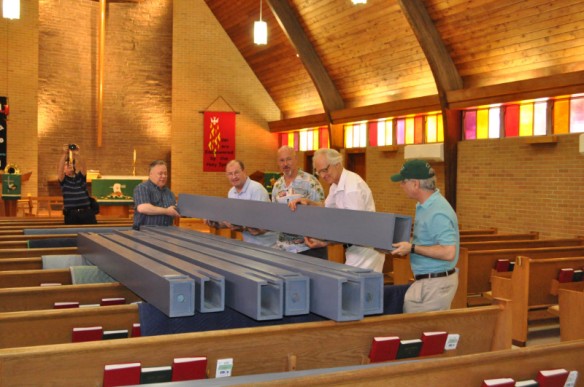
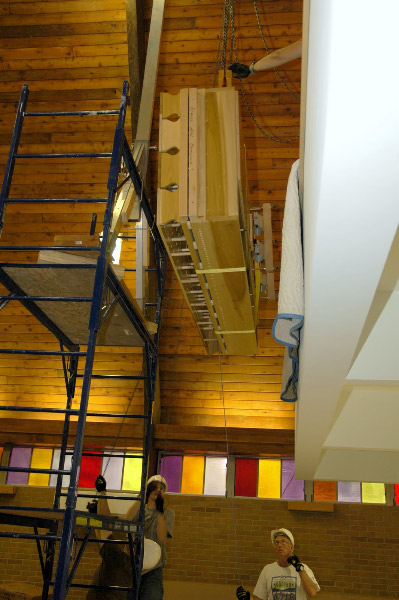
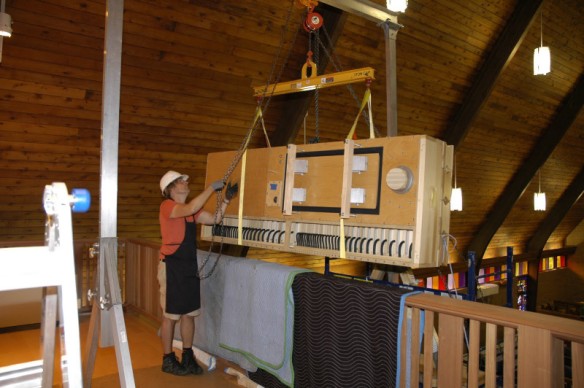

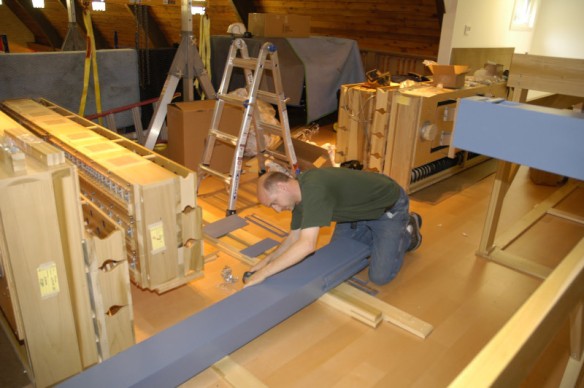
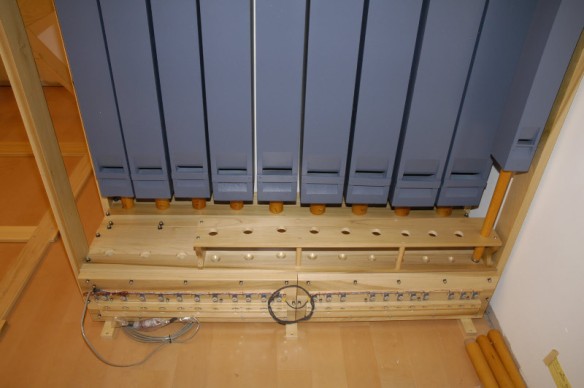
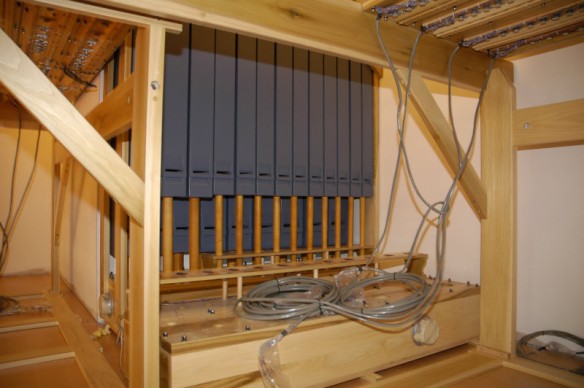
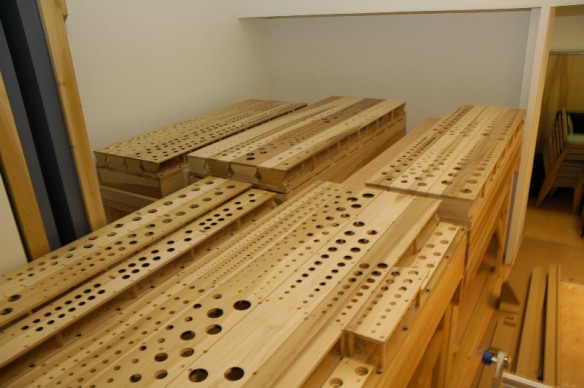
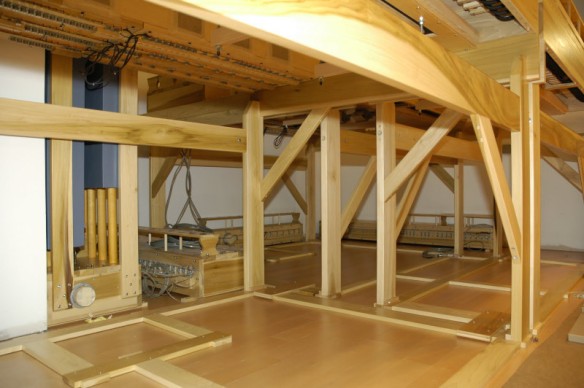

Can’t wait!